Otso Ambassadors Mark Watson and Hana Black have been on the road for the past three and half years, slowly making their way along the American Cordillera from Alaska to Patagonia. With 44,000km of riding behind them they have racked up a wealth of experience in conditions ranging from the highest Andean passes, to the Atacama desert, the Amazon jungle, and everything in between.
Since Cusco, Peru they have been riding a pair of our Voyteks which have been put through their paces with over 6000km of mountainous riding in Peru, Bolivia, Chile and Argentina. Here, Mark shares some of his thoughts about the Voytek and how they set their bikes up for long distance bikepacking.
If you are interested in seeing more about Mark and Hana, find them on social media: https://www.instagram.com/highluxphoto/ and https://www.instagram.com/beinghana/ and on their website: www.highlux.co.nz

Words and images by Mark Watson.
Frame & Fork
The only carbon framed bikes we’d previously owned were our road bikes back home in NZ, so using a carbon bike for the rigours of heavily loaded wilderness bikepacking was something that was new to us. There seems to be a common misconception that carbon frames, for bikepacking, are only suitable for relatively light loads, such as might be carried in bikepacking races or shorter tours, and for some bikes, this is true. However, after using the Voytek for six months now, on the gnarliest bikepacking trails and with loads that have included up to 18 days food and 13 litres of water at a time, I feel confident taking the Voytek anywhere and have no qualms riding the bike on the roughest of tracks with a load on board.
The size of the tubes and the bottom bracket cluster of the Voytek suggest that it’s probably a stiff bike, and indeed it is, which is very much in the bike’s favour when you load it heavily and hit back country trails. Climbing, accelarating and riding standing up, little is lost to frame flex. Our Surly Ogres were like wet noodles in comparison. Whether it was a deliberate decision by the Otso engineers, or just a side benefit, somehow the geometry of the bike seems to nail the sweet spot for loaded riding too, with the bike being confidence inspiring on steep, technical and sandy tracks. But it’s important to note that how the bike handles loaded is also a product of how you pack and distribute your gear – more about that later.
The fork we are running on the bikes is the Salsa Kingpin Deluxe, because it has a double set of mounts for cargo/water cages, which we like to utilise for a balanced load and extra water capacity. Something else that has been a stand out for us has been shifting from regular quick releases (as we had on the Ogres) to through-axles front and rear. These ‘tie’ the bike together with a stiffness that quick releases can’t match, improving handling, especially with a load and keeping the bikes quick and responsive on all terrain.
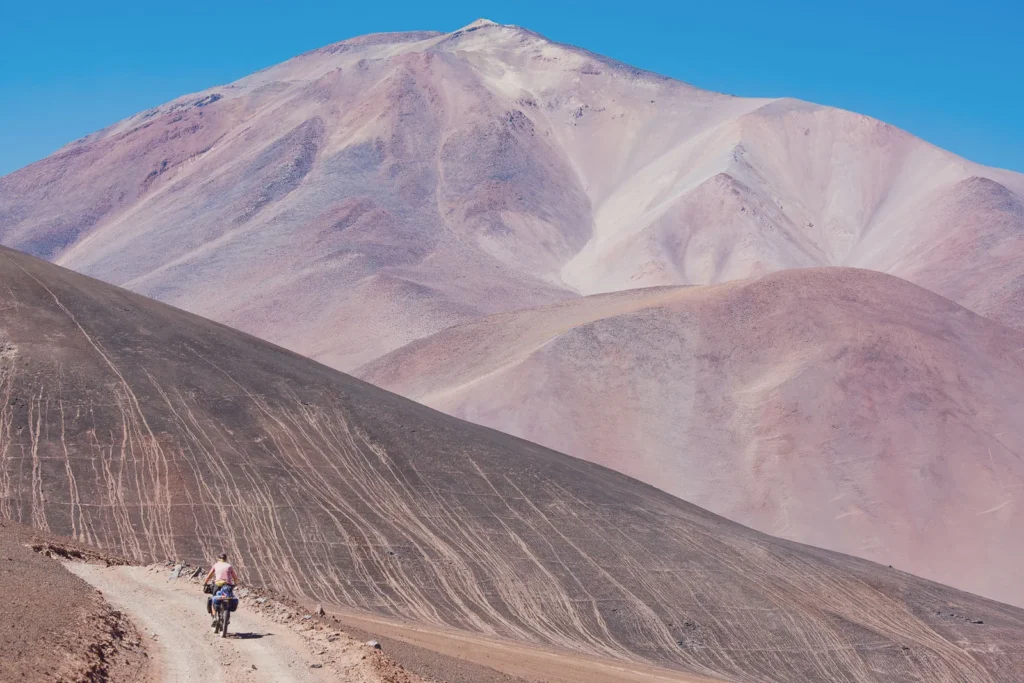
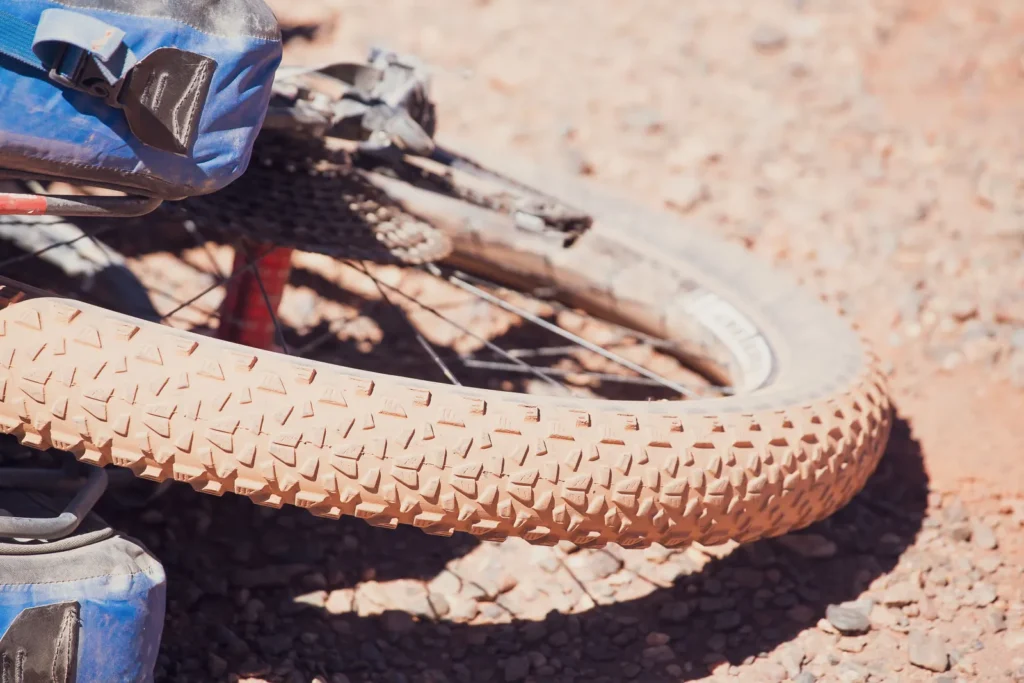
Wheels & Tires
Although the Voytek can take up to 4.6 inch tires (with a 26 inch wheel), our requirements for long distance bikepacking are best met with the combination of a 27.5 inch wheel and 3 inch tire. Neither of us are particularly tall, so 27.5 (especially with a 3 inch tire) suits us best for technical riding. Because the clearance of the frame is designed for a fat tire, when running 3 inch, we have a ton of clearance all around both wheels which makes riding in mud a breeze. Conditions would have to be really bad for this wheel combination to get clogged.
We have spent a lot of time in past months in sandy regions and on sometimes very rough roads (with no suspension fork) so 3 inch tires have been our go-to as they strike a balance between efficiency-over-distance and traction/float. However if you were running a suspension fork, or riding firmer and less extreme conditions, 2.6–2.8 would be ideal for long distance riding on this bike, giving you even more generous clearance for mud. Likewise, were we on a shorter trip with desert riding or rocky trails, we’d probably opt for a 4 inch tire.
Our rim of choice, the Hope Technology 35W, is at the narrow end of the spectrum for a 3 inch tire (40mm external), but the reason for this is that plus size tires are very difficult/expensive to obtain outside of a select few cities in Latin America, so we like to have the option to run a more widely available tire size, such as 2.35, in an emergency. A narrower rim saves us weight and we like that this model is also eyeleted for longevity.
The traditional school of thought for heavy loads and long distance is that 36 spokes are the way to go, however, in general plus rims have greater inherent strength making 32 spoke wheels sufficiently strong as long as the rim is eyeleted, they have strong spokes and are correctly tensioned. We have not broken a spoke on these bikes yet.
Hope Technology supplied us Fatsno Pro 4 hubs to combine with their rims and so far these have not skipped a beat, despite some extremely wet and dusty riding conditions for days at a time.
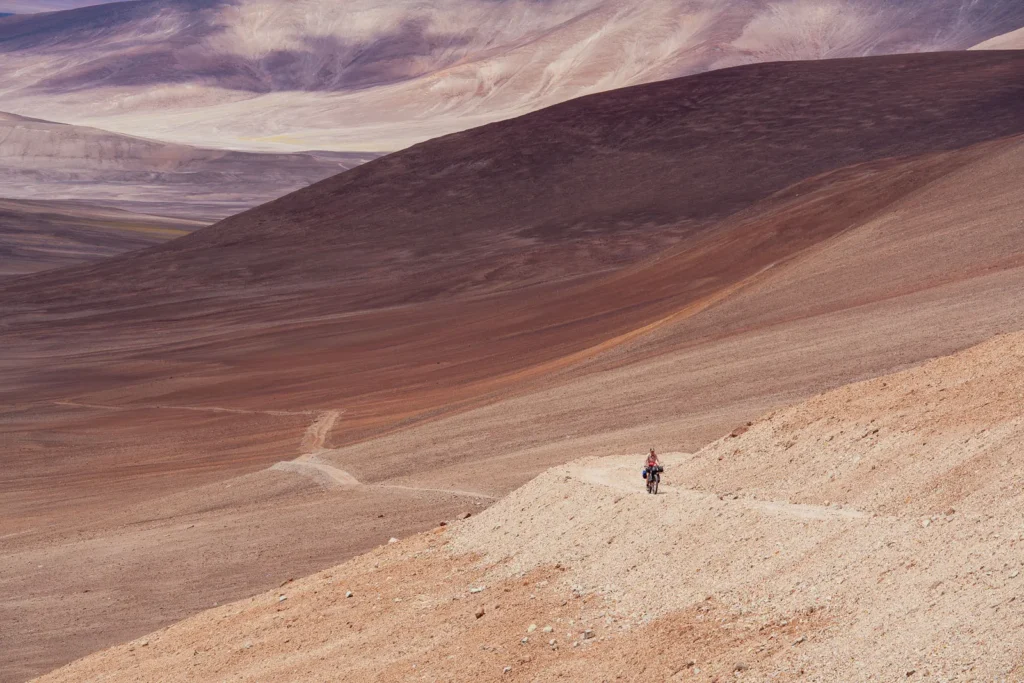
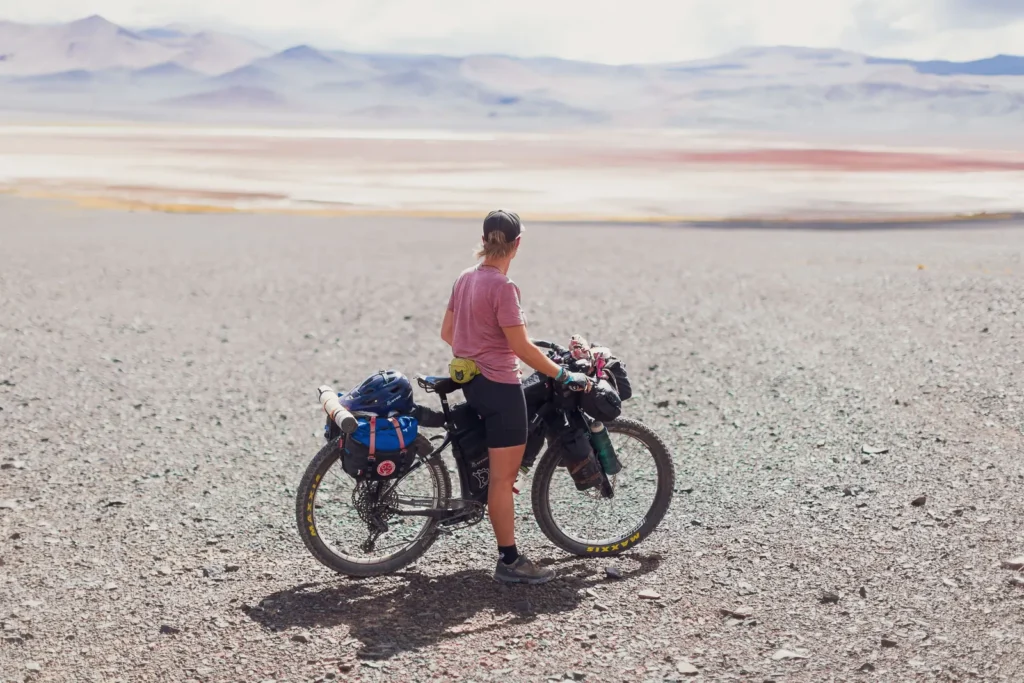
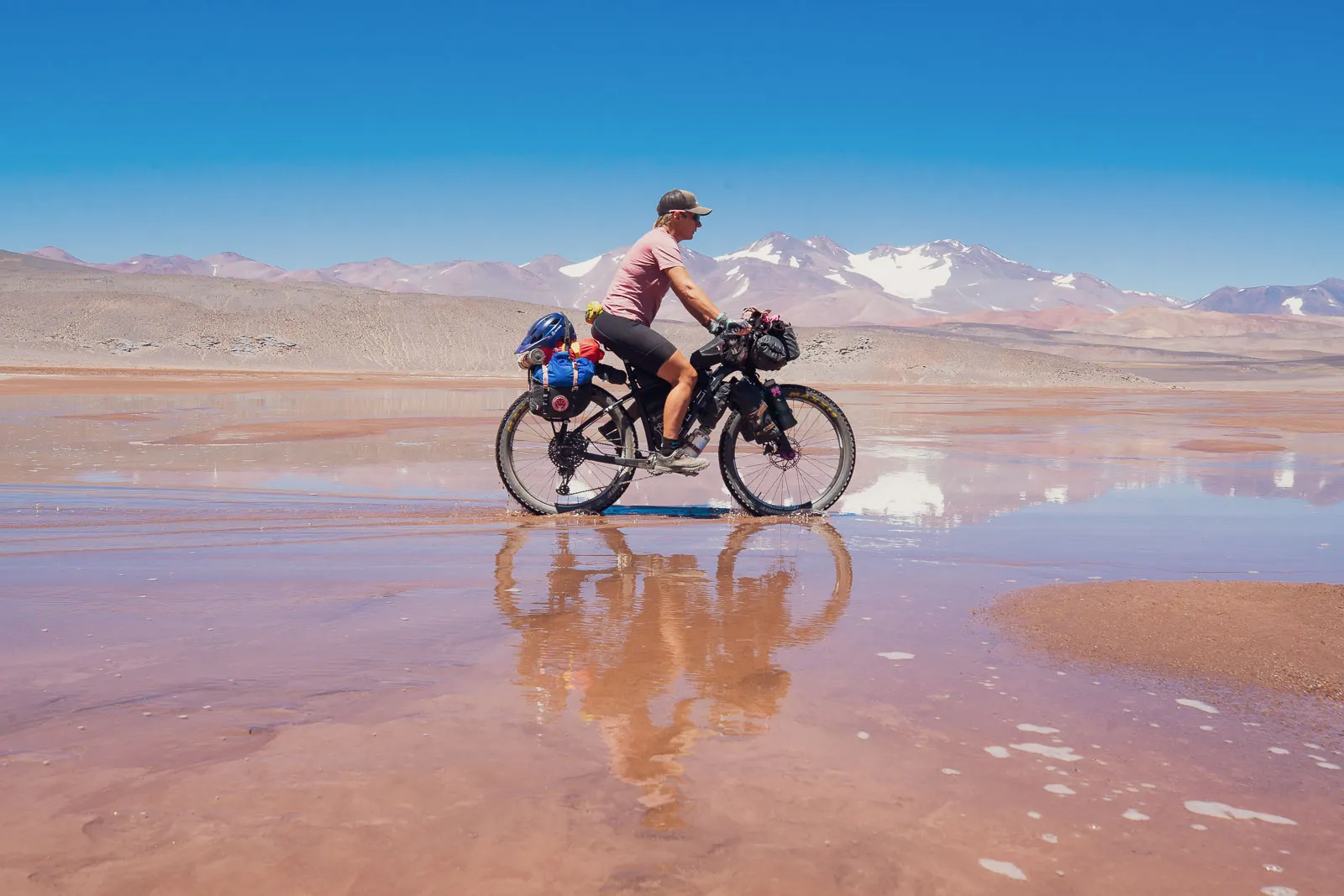
Drivetrain
Riding these Voyteks was the first time either of us had used a 1x drivetrain (Sram Eagle GX), which again is a system that has its skeptics when used for long distance bikepacking. We have found that the pros, so far, outweigh the cons of these drivetrains for touring, but this will also depend on the riding style and requirements of individual riders.
For us, with older knees and a penchant for finding rough and remote roads that are often steep, an easy climbing gear is key. So we paired the 10–50 12-speed cassette with a 28 tooth Wolf Tooth CAMO stainless chainring, giving us a minimum (easiest) gear-inch of 16.24, which has been enough, even with nearly 3 weeks food on board. We do get ‘spun out’ riding paved descents, but while touring this is not an issue for us. If were running a consistently lighter load (say for short trips back home) we’d use a 30 or 32 chain ring.
Eliminating the front derailleur saves weight and improves mud clearance, providing a more capable bike when conditions are bad and after six months now we have not missed our big chainrings at all.
We put new chains on the bikes after roughly 1800km of tough riding but due to lack of availability didn’t try to change them again until we’d done nearly another 4000km, by which time the second chain had stretched enough to have worn the chainring causing the new one to catch badly on the teeth. Interestingly that third chain seemed to work ok with the cassette, but this probably confirms that 12 speed chains do stretch faster than 10 and 11 speed, and require regular changes to extend longevity of the rest of the drivetrain.

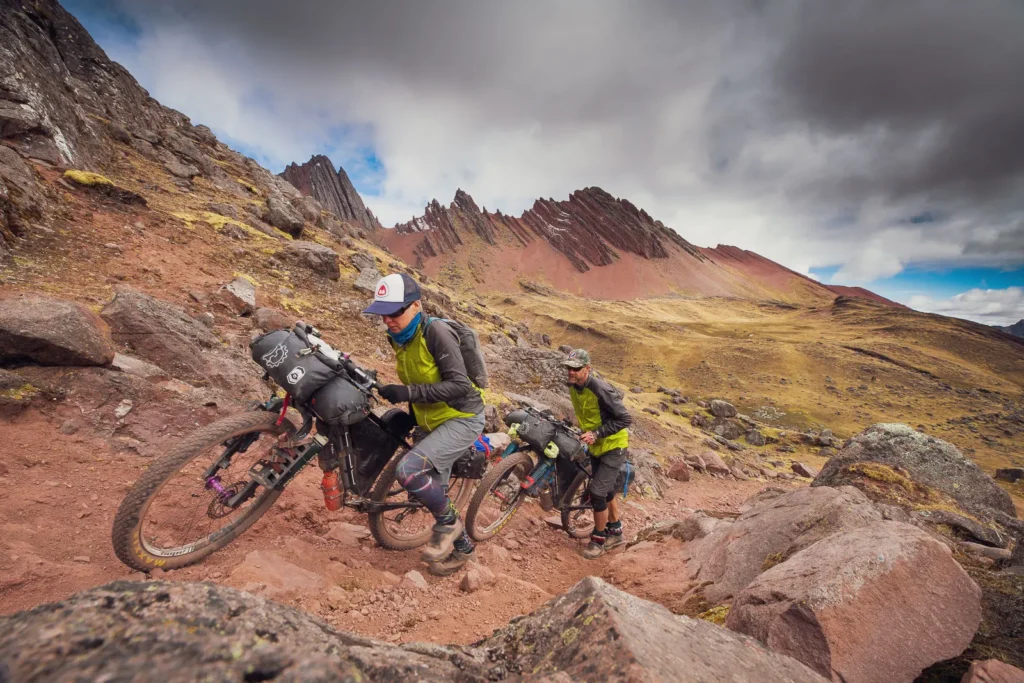

Brakes
As much as we love hydraulic brakes for trail riding and short trips, for us the best option for long distance and remote riding are mechanical disc brakes. The consequences of tearing out a hydraulic hose or snapping a brake lever (as we did on a high pass once in Peru) are too great. At least if you break a front brake lever with a mechanical brake you have the option to swap the cable to your rear brake lever.
Mechanical systems are more reliable and maintenance free, and depending on your system, the pads will usually be more widely available in Latin America too. We prefer the TRP Spyke as it has two active pistons (unlike the Avid models which only move on one side). This gives the brake a more modulated and hydraulic-like feel. We pair them with 180mm rotors front and rear for better braking with a load, and this also extends the life of the pads and rotors compared with smaller rotors.
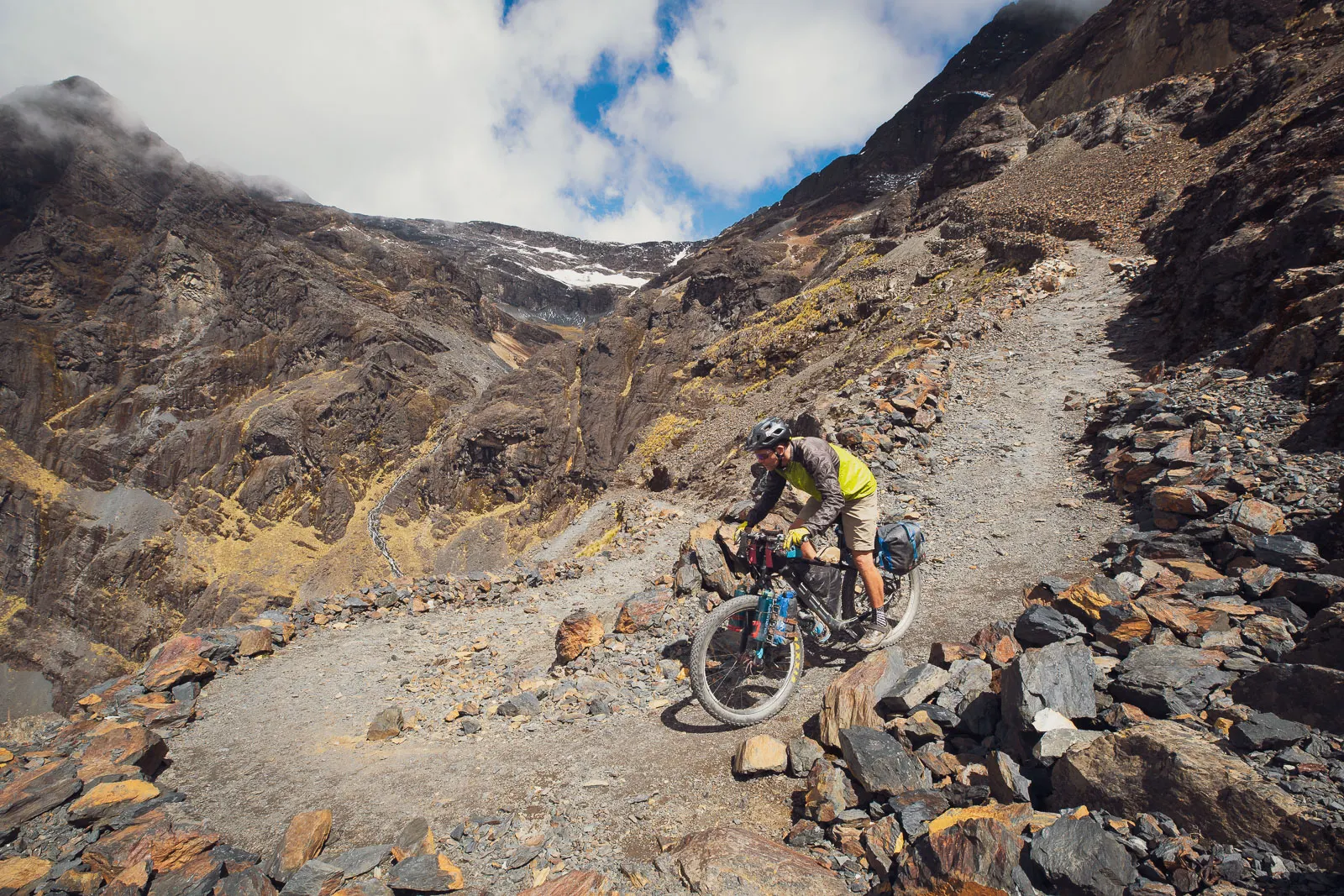
Handlebar
Having both experimented with different handlebars over the years, our preferred bar for long distance riding is the Watson (no relation) Cycles Revelation titanium handle bar. Ti is a good choice for long distance bars because it is extremely strong, making it reliable for many thousands of kilometres of rough riding, and is also more shock dampening than aluminium. This bar is 680mm wide with a 32 degree sweep, which we find hits the sweet spot between comfort and suitability for technical riding. We’ve used this bar since day one and have never once wished for bar ends, or any other kind of bar.
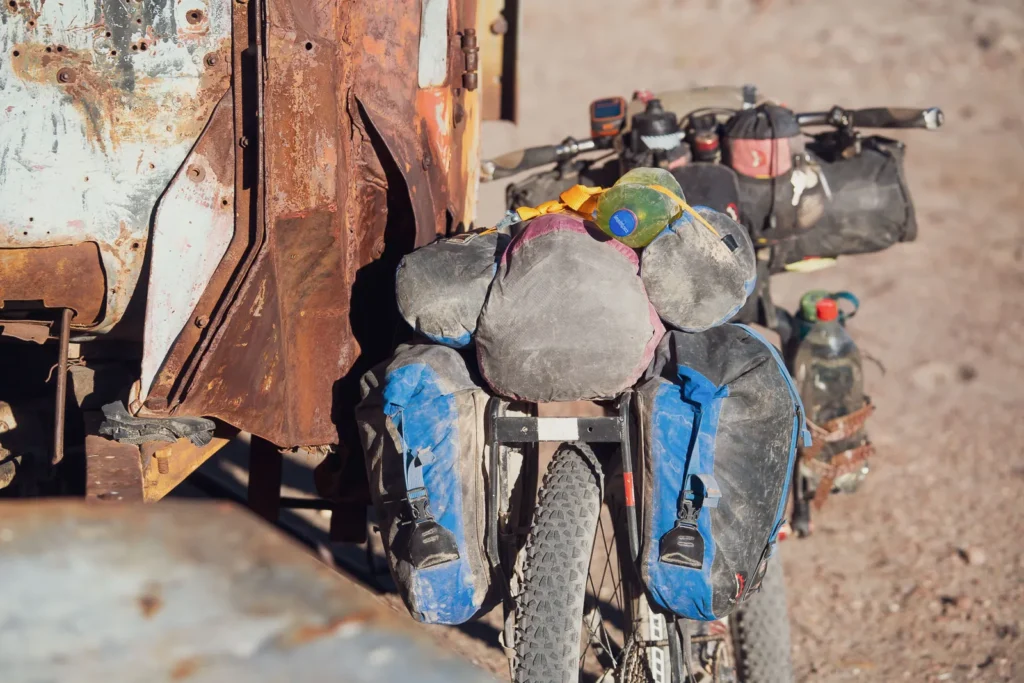
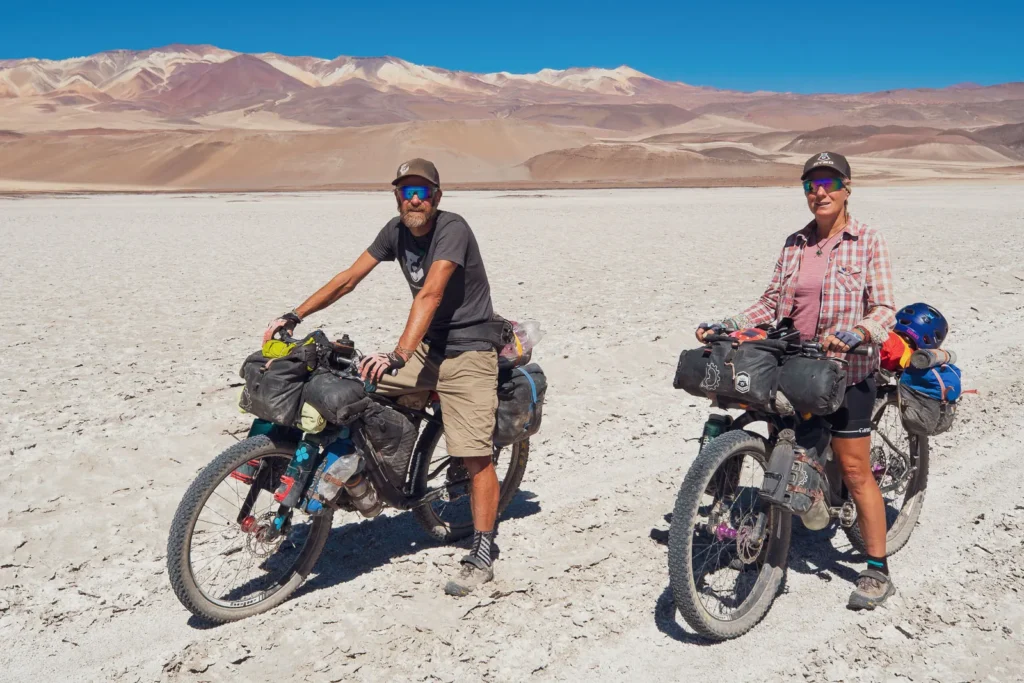
Luggage
For ideal bike handling in a range of conditions, an even distribution of the load over the bike is key. Revelate Designs supply us with their excellent bikepacking bags and we use a range of their models, as well as custom mini panniers to achieve both optimal load distribution as well as luggage capacity to suit longer distances between resupply. This system was pushed beyond capacity when we rode the Ruta de los Seis Miles Norte (18 days no resupply), so we extended our capacity with lighweight drybags attached to the decks of our Axiom Fatliner racks.
In our front harnesses we tend to carry bulky but light items such sleeping bag, tent, down jacket, sleep socks, leggings and sleeping mat, while the fork bags hold the rest of our spare clothing and rain wear (for quick accessability). The framebag, with its low centre of gravity position, is best for heavy items such as my camera lenses & spare tire sealant. It also works well for water or in Hana’s case; multiple small but dense items that she likes to keep quickly accesible. Items that we most rarely use, such as spare inner tube, brake pads, spare parts and day packs are kept in our downtube bags and Wolf Tooth B-RAD TekLite Roll Top bag. Laptop, minimal toiletries, food and cooking equipment occupy the mini panniers, while other small and frequently used items go in our Revelate Designs Egress Pockets, up front.
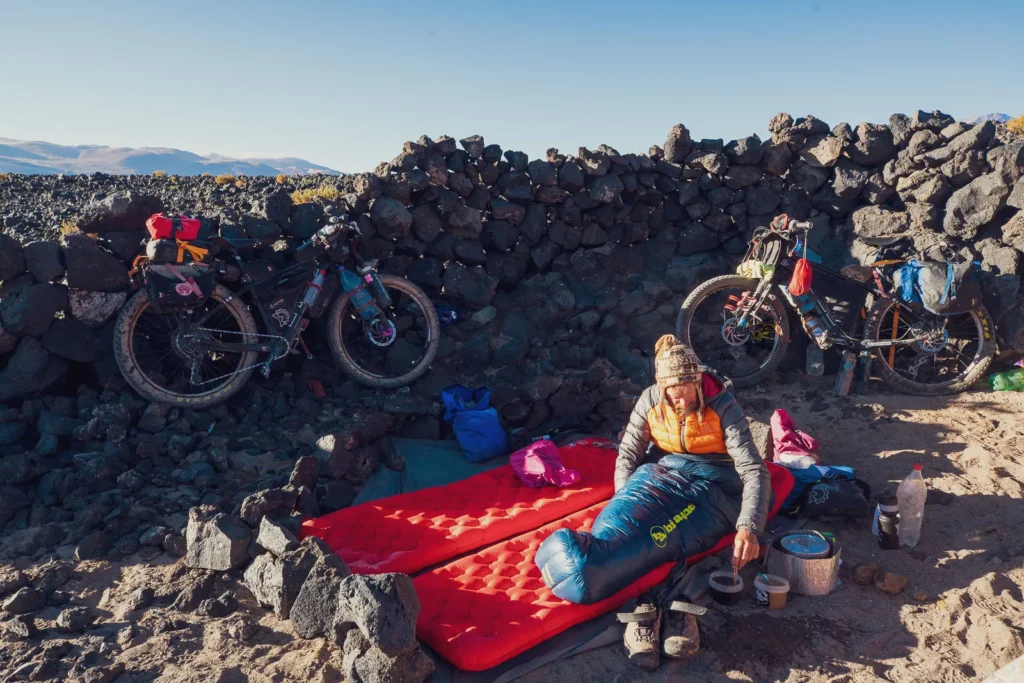
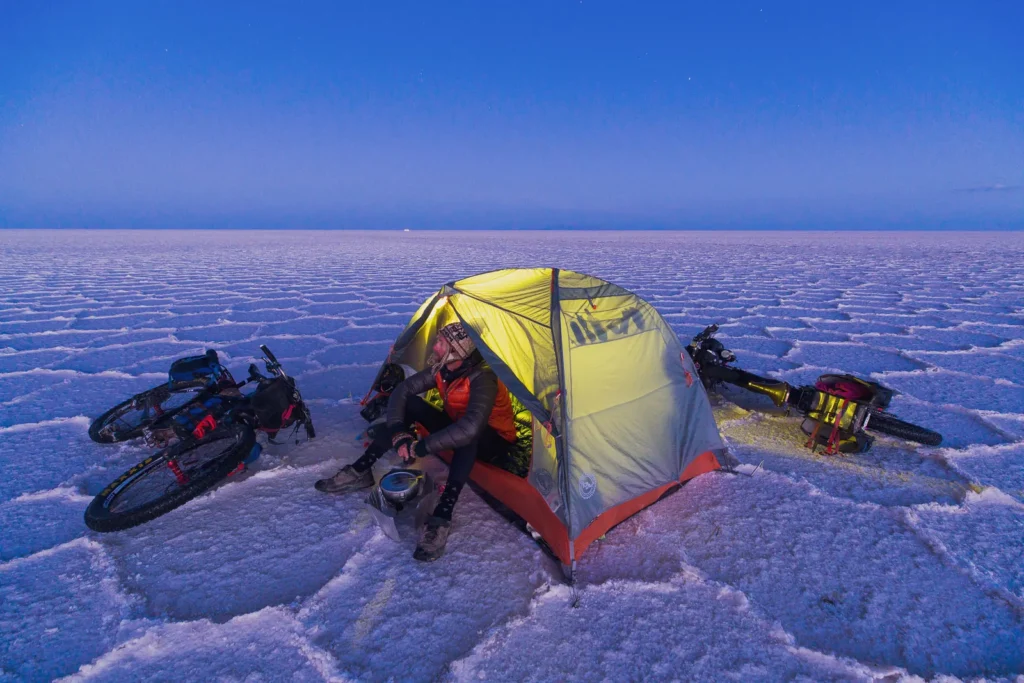
Summary
Overall, our ethos towards long distance touring and bikepacking is to remain agile. We ride with loads that are light and consciously selected, but not ultralight. This is enough to keep our choice of roads and tracks wide open, and gives us plenty of options for where we chose to carve our southbound trail.
Secondly, and just as important, is the choice of bike. For us, having a bike that is equipped to deal with the worst a trail might throw at it, means that it’s rare that we feel out of our depth, and it keeps the riding (mostly) enjoyable. It’s about having a bike that’s capable on all sorts of surfaces and that allows us to make the most of the riding, not riding one that just manages to cope. The bottom line after all is to have fun, and for us a light plus-tired bike with generous tire clearance is the perfect tool for this. As we’ve experienced ourselves and witnessed with other cyclists over the past 44,000km; if you are riding mixed surfaces, including pavement, the advantages of a plus-sized tyre on all dirt surfaces will always greatly outweigh its minor disadvantage of added rolling resistance on tarmac – after all, what’s 10 minutes extra at the end of a 10 hour day?
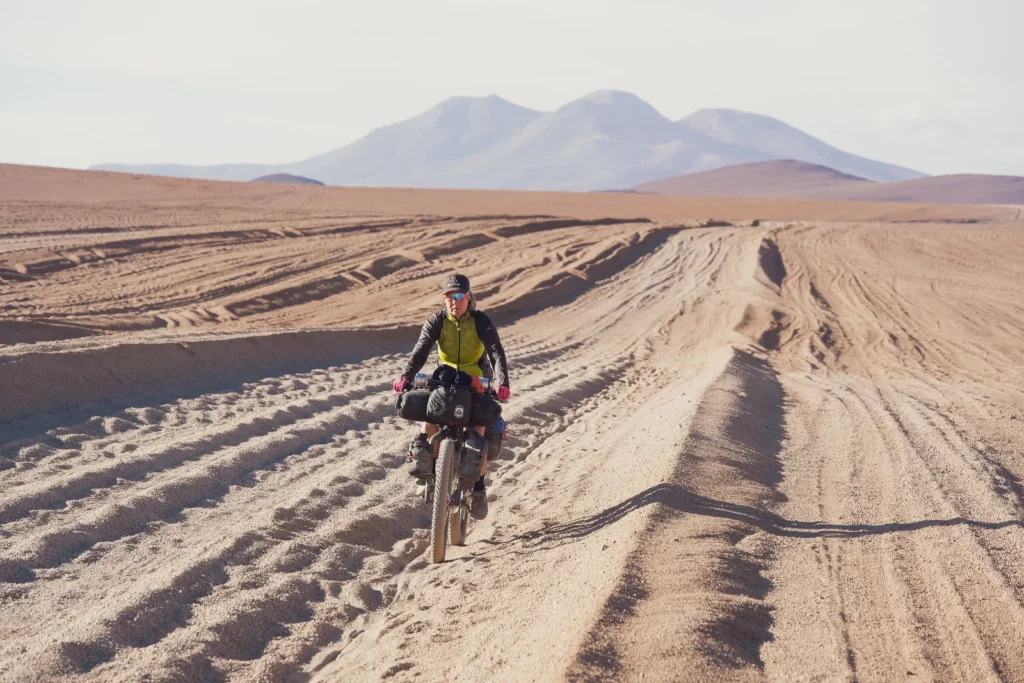
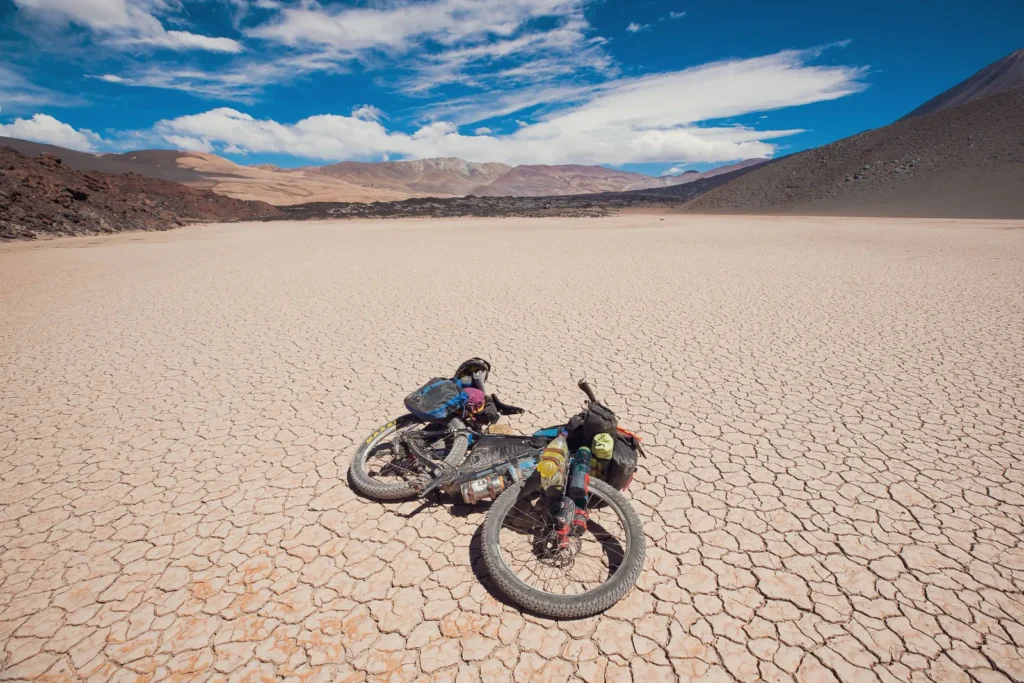
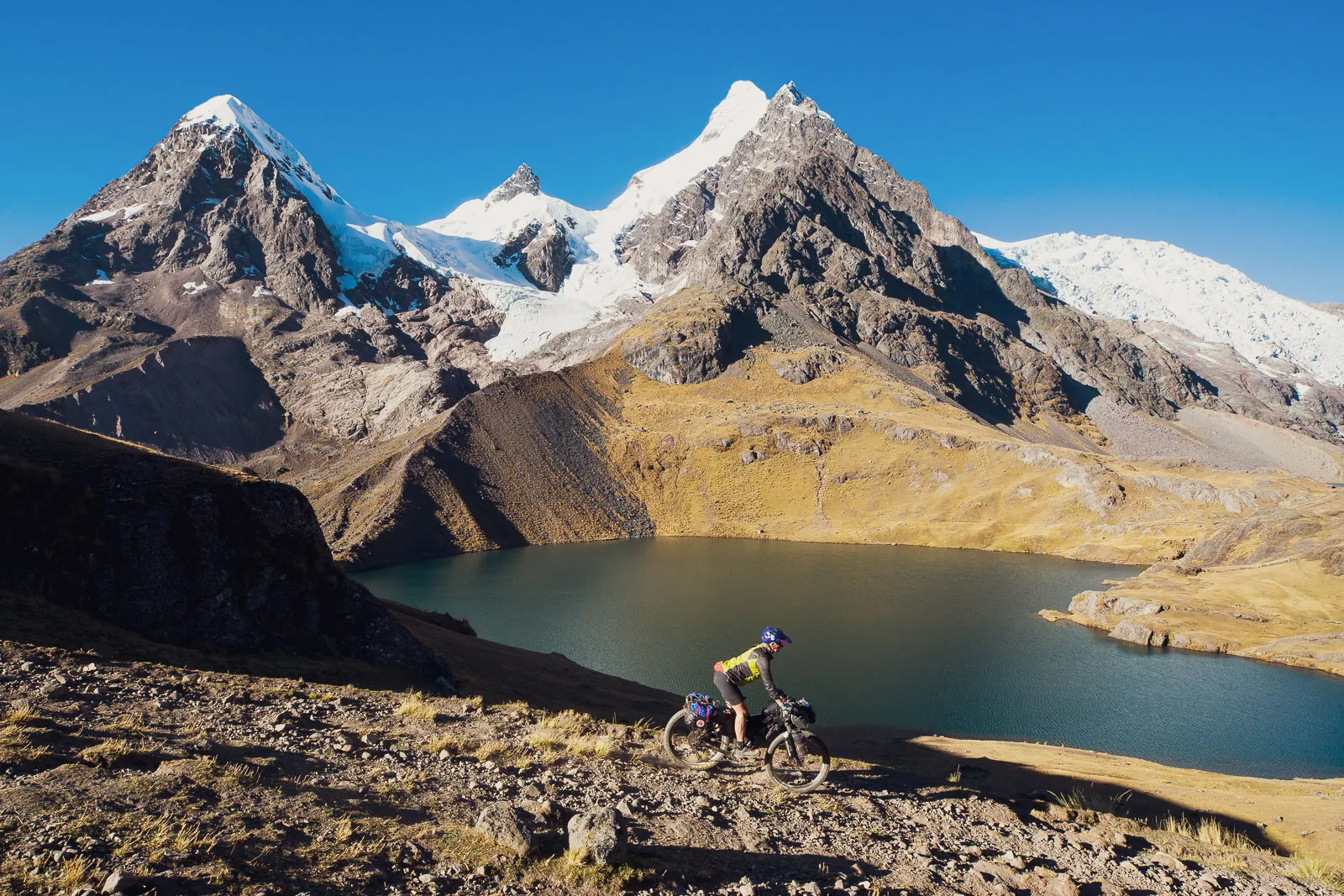

The Voytek is our all-season fat bike made to conquer rocky dirt roads, long gravel routes, and all surfaces in-between. Additional frame and fork mounts mean you can carry up to 18 days worth of food and gear and still ride with ease. Whether you’re packing a granola bar or nutrition for a week on the road, the Voytek is ready.




